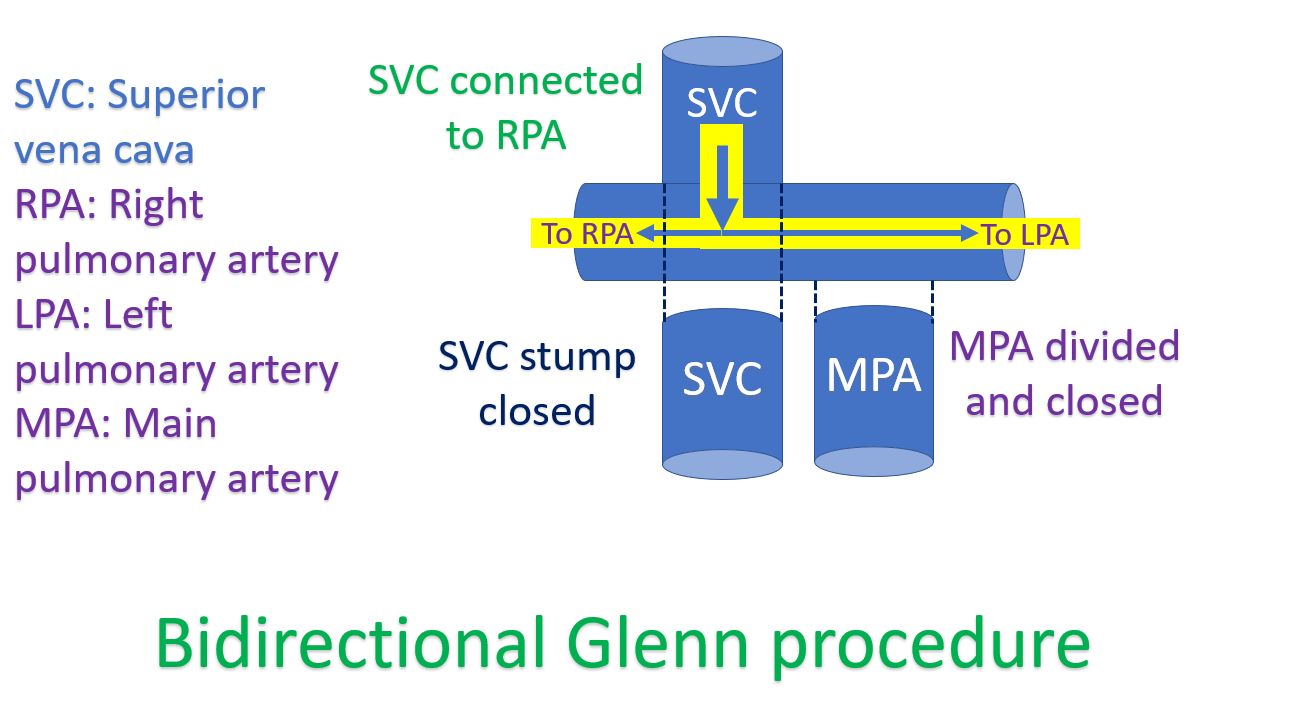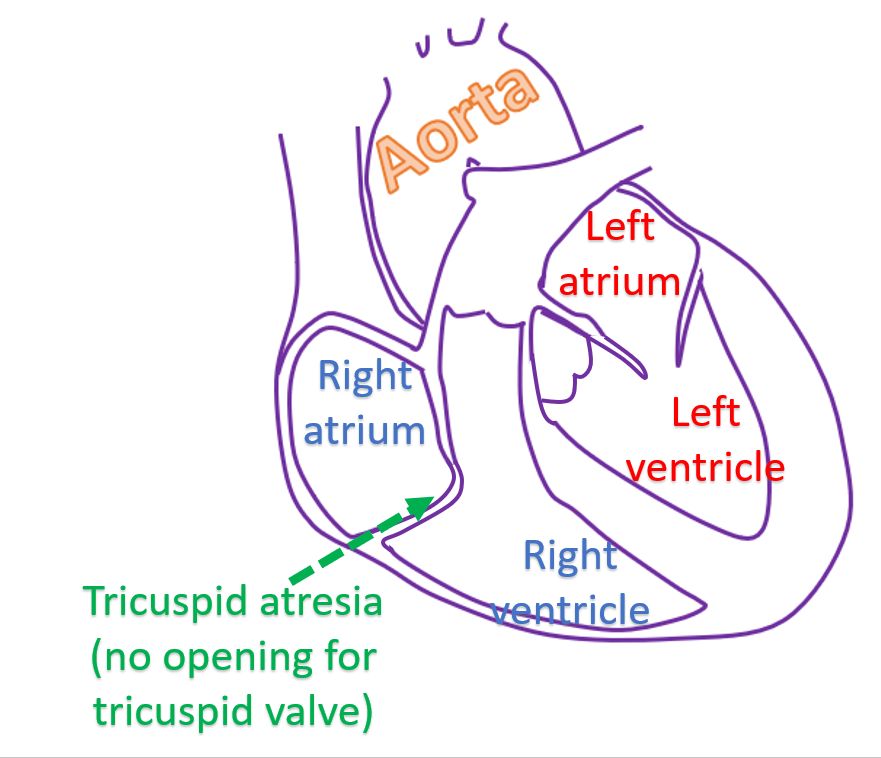What is a bidirectional Glenn procedure (BDG)?
What is a bidirectional Glenn procedure (BDG)?
Bidirectional Glenn procedure is done for children with some types of heart diseases. The superior vena cava is connected to the right pulmonary artery in this procedure. Superior vena cava is the blood vessel returning oxygen poor blood to the heart from the upper part of the body. Right pulmonary artery is the blood vessel carrying blood to the right lung for oxygen enrichment. The main pulmonary artery which takes blood from the right ventricle to lungs may be closed after this procedure. Right ventricle is the right lower chamber of the heart. In effect, blood returning from the upper part of the body can pass on to both lungs for oxygen enrichment. This procedure is usually done for patients with either a single ventricle or a functionally single ventricle (other ventricle very small or obstructed).

The left ventricle is very small in a condition known as hypoplastic left heart syndrome (HLHS). Along with it left upper chamber (left atrium) and aorta (blood vessel arising from the left ventricle) are also small. This is one birth defect for which bidirectional Glenn procedure is done as an initial palliation (partial relief). Tricuspid atresia is a condition in which the valve between the right upper chamber and right lower chamber of the heart is absent. Right upper chamber is known as right atrium and it normally opens to the right ventricle, the lower chamber. The opening is guarded by the tricuspid valve. When the tricuspid valve is not open, the right ventricle does not receive any blood and is usually very small. In such cases, only functioning ventricle is the left ventricle. Tricuspid atresia is another condition in which a bidirectional Glenn procedure is done.

The conditions in which the bidirectional Glenn procedure are done usually have poor blood flow to the lungs and hence a low oxygen saturation in the blood vessels of the body. As the procedure increases the blood flow to the lungs, oxygen saturation in the blood vessels of the body also improve significantly. The procedure also reduces the load on the functionally single ventricle which otherwise has to do the function of two ventricles. The procedure also simplifies the next operation needed in these children known as Fontan repair.
Bidirectional Glenn procedure can be done even at a very young age of less than 3 months. It can be done with and without the help of a heart lung machine (cardiopulmonary bypass). Heart lung machine supports the function of the heart and lungs during the operation, using an external equipment which consists of a blood pump and an oxygenator. The machine takes over the work of the heart and lungs temporarily and is widely used in open heart surgeries.


